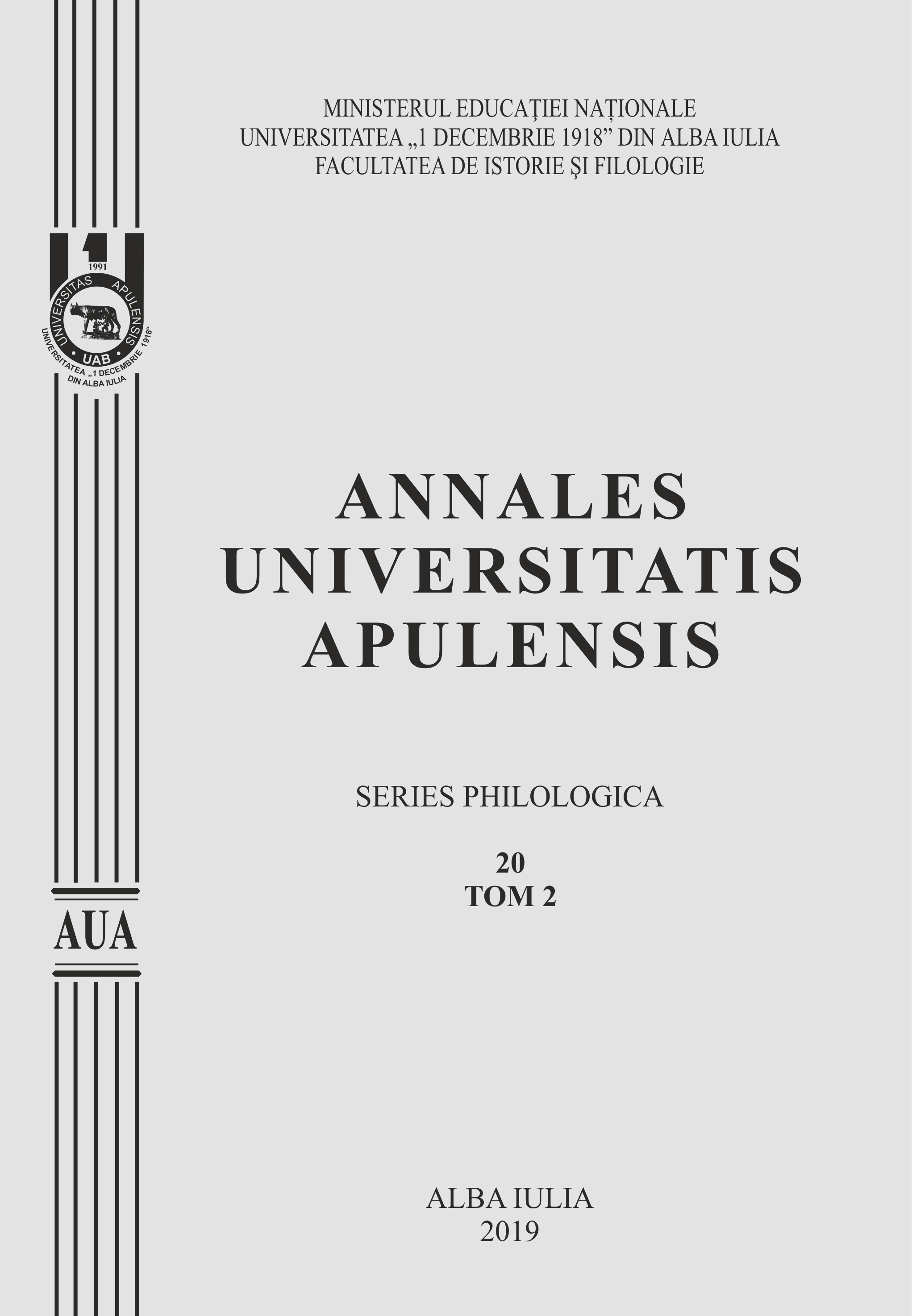LITERATURA IOANEI POSTELNICU ŞI INFLUENŢA CENACLULUI ,,SBURĂTORUL”
IOANA POSTELNICU’S LITERATURE AND THE INFLUENCE OF “SBURĂTORUL” LITERARY CIRCLE
Author(s): MARIA-IONELA NEGOESCU-ȘUPEALĂSubject(s): Language and Literature Studies, Studies of Literature, Romanian Literature
Published by: Universitatea »1 Decembrie 1918« Alba Iulia
Keywords: feminine literature; Bogdana; Darkness;The City of Wonders; The Teenagers; Eugen Lovinescu; Sburătorul;
Summary/Abstract: Member and even successor of the “Sburătorul” Literary Circle, Ioana Postelnicu managed to overcome the templates set up at that time in terms of feminine writing. She promoted daring topics in Romanian literature such as eroticism and the adolescent passion. With the time, these themes have been turned into periods of the feminine writing maturity. Ioana Postelnicu’s first novel, Bogdana, published in 1939 was considered by her mentor, the critic Eugen Lovinescu as being “a novel of exquisite purity”.Both ,,Bogdana” as well as “Darkness”, her next novel published in 1943, put the reader right in the urban scenery where the destinies of the heroes are designed. Getting into the inner world of her characters, the author gets every time new visions of their insights.The influence of “Sburătorul”literary circle and its head, Eugen Lovinescu played a decisive role in Ioana Postelnicu’s prose.Because the woman was historically and socially anathematized to exclusion and anonymity, she would learn to dare. She also learns how not to accept an amorphous lived life by subduing her desires and how to reject the comfort of resignation with the aim of not ending up in the dark of forgetfulness.By the naturalness of her writings, belonging to the field of native female memorialism, she would prefer to confront the disconcerting history. Her works stand as testimony that challenges of the time were not at all easy, especially for the intelligentsia but what eventually succeeded in the end was “the personalization of the woman” who could be discovered and rediscovered at all her stages of emotional experiences.
Journal: Annales Universitatis Apulensis. Series Philologica
- Issue Year: 20/2019
- Issue No: 2
- Page Range: 99-113
- Page Count: 15
- Language: Romanian

